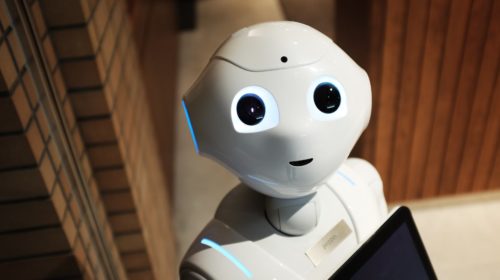So starting from the basic definition, what do all the three terms means
Artificial Intelligence means getting a computer to mimic human behaviour in some way.
Machine learning is a subset of AI, and it consists of the techniques that enables computers to figure out from the data and deliver it to the AI applicants.
Deep learning is, however, the subset of machine learning that enables computers to solve more complex problems.
So, first lets understand the difference between Artificial Intelligence and Machine learning
Artificial Intelligence |
Machine Learning |
AI stands for Artificial intelligence, where intelligence is defined acquisition of knowledge intelligence is defined as a ability to acquire and apply knowledge. |
ML stands for Machine Learning which is defined as the acquisition of knowledge or skill |
The aim is to increase chance of success and not accuracy. |
The aim is to increase accuracy, but it does not care about success |
It work as a computer program that does smart work |
It is a simple concept machine takes data and learn from data. |
The goal is to simulate natural intelligence to solve complex problem |
The goal is to learn from data on certain task to maximize the performance of machine on this task |
AI is decision making. |
ML allows system to learn new things from data. |
It leads to develop a system to mimic human to respond behave in a circumstances. |
It involves in creating self-learning algorithms. |
AI will go for finding the optimal solution. |
ML will go for only solution for that whether it is optimal or not. |
AI leads to intelligence or wisdom. |
ML leads to knowledge. |
Machine Learning
“A computer program is said to learn from experience E with respect to some class of tasks T and performance measure P if its performance at tasks in T, as measured by P, improves with experience E ”
Example 1: Machine Learning – Predicting weights based on height
Let us say you want to create a system which tells expected weight based on height of a person. There could be several reasons why something like this could be of interest. You can use this to filter out any possible frauds or data capturing errors. The first thing you do is collect data.
Example 2: Deep Learning
“Deep learning is a particular kind of machine learning that achieves great power and flexibility by learning to represent the world as nested hierarchy of concepts, with each concept defined in relation to simpler concepts, and more abstract representations computed in terms of less abstract ones.”
Comparison between Machine learning and Deep learning
-
Data Dependencies: The most important difference between deep learning and traditional machine learning is its performance as the scale of data increases. When the data is small, deep learning algorithms don’t perform that well. This is because deep learning algorithms need a large amount of data to understand it perfectly. On the other hand, traditional machine learning algorithms with their handcrafted rules prevail in this scenario. Below image summarizes this fact.
-
-
Hardware dependencies: Deep learning algorithms heavily depend on high-end machines, contrary to traditional machine learning algorithms, which can work on low-end machines. This is because the requirements of deep learning algorithm include GPUs which are an integral part of its working. Deep learning algorithms inherently do a large amount of matrix multiplication operations. These operations can be efficiently optimized using a GPU because GPU is built for this purpose.
-
Feature engineering: Feature engineering is a process of putting domain knowledge into the creation of feature extractors to reduce the complexity of the data and make patterns more visible to learning algorithms to work. This process is difficult and expensive in terms of time and expertise.
In Machine learning, most of the applied features need to be identified by an expert and then hand-coded as per the domain and data type.
For example, features can be pixel values, shape, textures, position and orientation. The performance of most of the Machine Learning algorithm depends on how accurately the features are identified and extracted.
Deep learning algorithms try to learn high-level features from data. This is a very distinctive part of Deep Learning and a major step ahead of traditional Machine Learning. Therefore, deep learning reduces the task of developing new feature extractor for every problem. Like, Convolutional NN will try to learn low-level features such as edges and lines in early layers then parts of faces of people and then high-level representation of a face.
-
Problem Solving approach: When solving a problem using traditional machine learning algorithm, it is generally recommended to break the problem down into different parts, solve them individually and combine them to get the result. Deep learning in contrast advocates to solve the problem end-to-end.
-
Execution time: Usually, a deep learning algorithm takes a long time to train. This is because there are so many parameters in a deep learning algorithm that training them takes longer than usual. State of the art deep learning algorithm ResNet takes about two weeks to train completely from scratch. Whereas machine learning comparatively takes much less time to train, ranging from a few seconds to a few hours.
-
Interpretability: Last but not the least, we have interpretability as a factor for comparison of machine learning and deep learning. This factor is the main reason deep learning is still thought 10 times before its use in industry. On the other hand, machine learning algorithms like decision trees give us crisp rules as to why it chose what it chose, so it is particularly easy to interpret the reasoning behind it. Therefore, algorithms like decision trees and linear/logistic regression are primarily used in industry for interpretability.
-
By Deepali Gupta


